Search results
150-Year-Old Family Bible Recovered
December 4, 2012 by ramona
Filed under Articles, Latest News
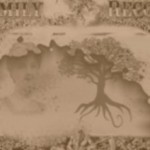 Sometimes the most precious gifts we receive come in the form of a kind gesture from a total stranger.
Sometimes the most precious gifts we receive come in the form of a kind gesture from a total stranger.
Such was the case for a Denver woman who received an email this month from a thoughtful stranger in Arizona…1500 miles away. The email contained information about a 150-year-old family bible, an attachment with pictures of the bible and a query as to whether the bible belonged to the Denver woman’s family. Together with the pictures was a hand written page that the woman immediately recognized as her great grandfathers.
The email also held the information that the bible – purchased by a picker at an estate sale – was slated for an upcoming auction. The decision was made to travel to Arizona and make a bid for the lost family treasure.
With Christmas, fast approaching the spirit of giving must truly be in the air for when the woman and her family reached their destination they received yet another surprise. The auction house closed the sale and gave the bible back to the family.
Contained within the bible was a peacock feather, photographs, lace and locks of hair: along with pages of family deaths, marriages and births.
The woman who sent the email stated that she felt compelled to find the bibles rightful home and it only took her a few days to find the family line that led her to the Denver woman.
Kindness in the Genealogy Community
Something wonderful about the genealogy community is that stories like this one are not unique. To find evidence of this you need look no further than the internet to discover some fantastic websites such as Ancestor’s Lost and Found.
Ancestor’s Lost and Found is a searchable site dedicated to returning lost memorabilia found by others to their rightful descendants.
Its directory pages are filled with:
- Lost treasures: A section where you can post lost family items you are searching for
- Treasures to Share: Found items people are willing to share
- Treasures Found: Items found by individuals who would like to return them to the correct families
- The Mystery Gallery: Family Tree Photos in need of identification
- Family Bibles: a page set aside for Family Bibles containing genealogy information
Ancestor’s Lost and Found is sponsored by USGenNet: a not for profit webhosting service developed specifically to support sites such as this one. USGenNet relies on donations for continued support, if you would like to help out with a tax deductable donation visit here.
Native American Genealogy
November 30, 2012 by ramona
Filed under Genealogy Research Resources, Latest News, Sharing Genealogy Information
 Native American genealogy can present some unique research problems, distinct from family trees that are deeply rooted in Europe and Great Britain.
Native American genealogy can present some unique research problems, distinct from family trees that are deeply rooted in Europe and Great Britain.
Native American genealogy is simply not a straightforward matter of pouring through the usual church and census records.
Researchers on the trail of their Native American ancestors need to develop an understanding of tribal:
- Traditions
- Culture
- Naming customs
- Kinship systems
- History
All of which vary greatly between the different nations.
The good news for genealogy beginners’ starting out with Native American genealogy is that there is no shortage of resources for learning the basics of the nation you are researching. Two wonderful sources to start the ball rolling are the National Archives: Native American Heritage and Family Search: American Indian Genealogy
Once you have done your homework, here is another excellent resource you will find enriching.
Native American Genealogy: A recorded history
Edward Curtis
In the early 1900s, photographer Edward Curtis began to fulfill a major life goal: to record as much of the traditional life of Native American peoples as possible, before it disappeared.
Endorsed by President Theodore Roosevelt and funded by financier J.P. Morgan, Edward Curtis devoted the next thirty years of his life to the project. Travelling across the United States and Canada as far as the Northwest Territories Curtis documented over 80 tribes, for which he earned the nickname “Shadow Catcher”.
What makes Curtis’ body of work so remarkable is his insight that the present is a result of the past, and therefore must play a significant role in the portrayal of a people. To this end Curtis was not satisfied with posed pictures taken on reservations but instead set out to capture life lived or as it was lived in more natural settings.
Due to his efforts, now an invaluable collection of media includes recorded:
- Language
- Music
- Tribal mythologies and history
- Described tribal population
- Traditional foods
- Dwellings
- Clothing
- Games
- Ceremonies
- Burial customs
In addition to this, Curtis managed to capture the images of many notable Indian people of the time, including Red Cloud, Geronimo, Medicine Crow and Chief Joseph.
http://youtu.be/oVPLF9tXWlg
In due course Curtis shot over 40,000 photographs, conserved 10,000 audio recordings and made what is considered the world’s first documentary film.
My Heritage Buys Geni.com
November 27, 2012 by ramona
Filed under Articles, Latest News
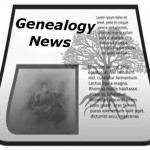
Israeli based genealogy site My Heritage just purchased competitor Geni.com. The purchase will allow My Heritage to acquire billions more global records, making the company a huge competitor in the genealogy market.
The addition of the Geni.com records brings My Heritage up to approximately 72 million registered users. These numbers elevate My Heritage as a serious competitor to Ancestry.com, which had about 1.87 million users as of the first quarter of 2012. One more point that solidifies My Heritage as a global force in online genealogy research is the site’s focus on collaboration and record sharing: which gives it a great social media feel.
Gilad Japhet, founder and CEO of My Heritage commented. “Today’s news is a major turning-point for the family history industry, giving us significant new resources to extend our market leadership and deliver new value to families worldwide,”
Adding…
“Well established as an innovative and social brand, Geni.com is a natural addition to My Heritage and together we look forward to taking collaborative family history to new heights. Over the past few years our dedicated workforce has transformed My Heritage from a garage start-up into a successful, dynamic and global company. With new funds, impressive new talent from Geni.com and new world-class leaders on our Board, we look forward to fulfilling our potential and accomplishing our mission to bring family history to the masses.”
Along with the new records, My Heritage also gains some new talent in the form of Geni.com employees and engineers. One more addition to the My heritage family will be founder of Geni.com David Sacks, who will take a seat on the My Heritage board of directors.
About the sale, Sacks says, “What we’ve learned over the years building Geni is that there are three key assets that customers want in the genealogy space: records, private trees, and the world family tree. This deal brings together all of these pieces to form the most complete offering in the genealogy space. Together with My Heritage, we look forward to continuing Geni’s mission of connecting humanity through a single family tree”
Although united, the two companies will operate separately keeping their independent services: yet allowing users an option to collaborate. A system of two-way information exchange between the sites is a huge added-value initiative for users of both sites. My Heritage users gain additional records and Geni.com users gain My Heritage’s Smart Matching technology (a fantastic tool that finds common matches between user’s family trees) and access to My Heritage DNA kits for those interested in genetic genealogy.
Iceland: Genealogy with a Twist
November 23, 2012 by ramona
Filed under Articles, Genealogy and Immigration, Latest News
 Most people are interested in genealogy as a hobby, an addictive search for a family tree whose roots are yet undiscovered.
Most people are interested in genealogy as a hobby, an addictive search for a family tree whose roots are yet undiscovered.
In Iceland however, genealogy takes on a broader importance. It becomes a necessity for singles with the natural desire to settle down and perhaps start a family.
Why… because with a current population of about 318,000 people whose ancestors have lived on this isolated island since the late Viking age (approximately the year 870) finding someone you are not closely related to can become a daunting task.
Not to worry, Icelanders have come up with a solution to the problem that gives a unique slant to genealogy research.
The Islendingabok
Their solution: the Islendingabok, an online genealogical database that holds the ancestral information of Iceland’s inhabitants going back 1,200 years. The Íslendingabók combines the science of medical genetics and some major software, with the aim of tracing the family relationships of the countries citizens since the time of settlement. It also uses techniques more familiar to family history research: such as church and census records.
The database allows Icelanders to make certain they are not about to become kissing cousins: however, it is in Icelandic only.
Icelandic Immigration
Although many descendants of Iceland’s original settlers stayed, there were also those who immigrated to North America.
Iceland near the end of the 19th century was a land of stark beauty. It was also a land of overwhelming hardships stemming from conditions of over population, economic adversity, violent volcanic eruptions and extreme cold. It was at this time that even some of the staunchest Icelanders left in search of greener pastures.
However, Icelandic nationalism remains as strong as the stories of home. Generations later, some Icelandic ex-pats feel the pull of heimthrá, or being in thrall of home. For descendents of those immigrants, there is a wealth of information concerning Icelandic genealogy on Hálfdan Helgason’s site dedicated to the Icelandic Emigration to North America.
More links to Icelandic genealogy can be found here…but before you go remember to download your FREE Family Tree Starter Kit available with your 30-day free trial to Genealogy Beginner.
Family Search: Launches Huge Project
November 16, 2012 by ramona
Filed under Articles, Latest News
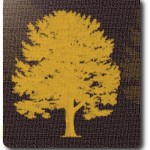 After the huge effort earlier this year to transcribe the 1940 census Family Search is once again making big plans to help genealogists and family history fanatics world wide.
After the huge effort earlier this year to transcribe the 1940 census Family Search is once again making big plans to help genealogists and family history fanatics world wide.
The new project will see the not for profit genealogy giant sending 200 teams around the world to photograph 320 million images of birth, death, wills, immigration and church records from 45 countries.
After being photographed, the images – at a rate of roughly 300 per day – will be sent to Salt Lake City and published to the website within a month.
Of course, this is all pending permission to photograph the images. A task more easily accomplished in some countries than others.
New Records to help build Your Family Tree
Already the holders of the largest database of genealogical records globally, Family Search adds new records and images on a monthly basis.
So far this month they have already added numerous records and images to their collections from:
|
The US Brazil Colombia Czech Republic England Estonia Hungary Indonesia Ireland |
Italy Netherlands New Zealand Canada Peru Portugal Slovakia Spain Sweden |
Best of all, Family Search provides free access to all records and images.
Before you get started digging up your roots make sure you are fully organized and prepared. Check out Genealogy Beginner’s lessons, Family Tree Charts and Research Tracking Forms: available at no cost with your 30-day free trial.
Scotland’s People Publish Wills: 1902 and 1925
November 4, 2012 by ramona
Filed under Articles, Latest News
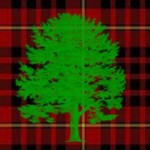 Today, Scotland’s People, the popular website for Scottish Genealogy made public the wills and testaments of 267,548 people.
Today, Scotland’s People, the popular website for Scottish Genealogy made public the wills and testaments of 267,548 people.
The collection, held by the National Records of Scotland includes the last wishes of persons who died in the country between1902 and 1925.
Records that may be of particular interest to genealogists and historians are the last wills and testaments of:
- Poorhouse inmates
- WWI soldiers
- Suffragettes
- Victims of the Titanic disaster
- Over 35 millionaires
Records keeper for Scotland and acting registrar general Audrey Robertson, commented, “We’re proud to be marking the 10th anniversary of ScotlandsPeople by creating a major enhancement of our popular resource for Scottish family history. The 400,000 additional testament entries from 1902 to 1925 will open up exciting new avenues for people in enhancement of our popular resource for Scottish family history.”
Family Tree Research
Genealogy beginners who have not yet searched this record type may be interested to learn that there are two types of wills.
The first, a Testament or Testamentary was made up of four parts: an introductory clause, an inventory, a confirmation clause and a copy of the will. This form of will was prepared before death.
The second is the Testament Dative, which was prepared after decease for the purpose of appointing an executor or clearing debts. Although it should be made clear that, it was not mandatory for any person to make a will under Scottish Law
The information you may find on a Testament or Testament Dative may include a list of the departed’s personal property along with a glimpse into their state of mind: in addition to their title (if any), occupation and place of residence.
Scotlandspeople Site info:
Search: Free
Document View: $$$
Requires registration
Ancestry.com: SOLD
October 21, 2012 by ramona
Filed under Articles, Latest News
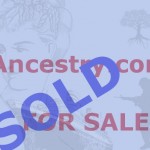
Thank You Ancestry.com for the countless Family Trees that have been built due to the access you have provided.
Thank you for the Census, Passenger lists and military records: not to mention the numerous collections and genealogical documents dating back to the 13th century.
Ancestry.com has been providing service to genealogists around the world for the past 15 years. Starting out in the 1980’s as Ancestry Inc: back at the beginning of online research when family history hunters had to use snail mail and visit dusty old libraries and archives.
Since that time, the company has grown to more than 2 million online subscribers.
However, as the saying goes…all good things must end…and October marks the end of an era for the genealogy giant.
This week Ancestry.com will pass the hat on to private equity firm Permira, who purchased the company for $1.6 billion. Ancestry’s new owners report that there are big plans in store for the company. Spokesman and partner for Permira, Brian Ruder stated, “With its pioneering technology and market leading position, Ancestry.com is an exciting investment opportunity for the Permira funds,” adding, “We are thrilled to be able to back the company as it continues to develop new and innovative content, and expand in both its core markets and into new geographies.”
At sale date the company employed 850 people in 10 offices across the US, Britain, Italy and Germany.
Ending on a positive note, Tim Sullivan a chief executive of Ancestry.com remarked, “This is a successful outcome for our public stockholders, and a great day for Ancestry.com employees and subscribers around the world.”
A Family History of Witchcraft
October 17, 2012 by ramona
Filed under Articles, Genealogy Research Resources, Latest News, Sharing Genealogy Information
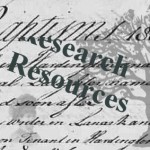 “In the Nineteenth day of March last I went to Salem Village, and lodged at Nathaniel Ingersol’s near to the Minister Mr. P.’s House, and presently after I came into my Lodging, Capt. Walcut’s Daughter Mary came to Lieut. Ingersol’s and spake to me; but suddenly after, as she stood by the Door, was bitten, so that she cried out of her Wrist, and looking on it with a Candle, we saw apparently the marks of Teeth, both upper and lower set, on each side of her Wrist.”
“In the Nineteenth day of March last I went to Salem Village, and lodged at Nathaniel Ingersol’s near to the Minister Mr. P.’s House, and presently after I came into my Lodging, Capt. Walcut’s Daughter Mary came to Lieut. Ingersol’s and spake to me; but suddenly after, as she stood by the Door, was bitten, so that she cried out of her Wrist, and looking on it with a Candle, we saw apparently the marks of Teeth, both upper and lower set, on each side of her Wrist.”
Such is one account of a person afflicted by witchcraft in Salem Village in 1692.
Mary, daughter to Militia Commander Jonathan Walcott was one of the first of the accusers in the Salem Witch trials and one of the accusers of Bridget Bishop, the first woman to be executed during the trials.
All Hallows Eve is quickly approaching and those with ancestors involved in witch trials may be interested in learning about some fantastic research resources.
Number one on the list is, The Wonders of the Invisible World Being an Account of the Tryals of Several Witches Lately Executed in New-England, to which is added A Farther Account of the Tryals of the New-England Witches written by Cotton Mather and Increase Mather. You can read about Mary, Bridget and many others in this account of the trials given by peoples involved. A digital copy of this book can be found free at Project Gutenberg.
Another interesting resource is The Associated Daughters of Early American Witches. This group focuses on sustaining the memory of those accused of witchcraft in Colonial America. This membership only society also actively searches out living descendents of the accused.
If your interests lie overseas, you will want to check out The Witch Hunts (1400-1800). Amidst the great information on the website, is an online mock-up of a witch-hunt set in Germany in 1628. In this simulation, you play a fictional character however, the events are historically accurate (warning, this may be disturbing to some). The outcome of your trial will depend on choices you make during the simulation.
One last resource is the Survey of Scottish Witchcraft 1563 – 1736. On this site, you will find a database containing the names of almost 4,000 people accused of witchcraft in Scotland.
Before you start trick or treating for your ancestors download Genealogy Beginner’s fantastic Family Tree Charts and Research Tracking Forms available with your 30-Day FREE TRIAL.
Genealogy, History, Tall Tales & Ghost Stories
October 11, 2012 by ramona
Filed under Articles, Family History, Latest News
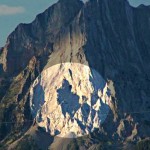 Every family historian knows that woven through the branches of their family tree are family stories and legends distorted by time.
Every family historian knows that woven through the branches of their family tree are family stories and legends distorted by time.
Sometimes however, genealogy plays a role in the legends of entire communities. This could not be truer than in the story of Fernie, a small coal-mining town nestled in a peaceful valley in the East Kootenay region of British Columbia, Canada.
The Tall Tale
While out seeking his fortune in 1887, a young prospector named William Fernie was camped beside a hunting party from the Kootenai tribe. He noticed a necklace of gleaming black stones hung about the neck of one of the chief’s daughters. William Fernie knew at once that the stones were coal and asked the chief where they could be obtained. The chief would not tell him, so he pursued the girl, promising marriage in order to learn the secret. Fernie however, after learning the location of the coal broke his promise…deserting the girl.
Angered, her mother set a curse upon the valley and all who would dwell there to die from fire, flood and strife.
To this day, high upon the rock face of Hosmer Mountain looms the ghostly shadow of the abandoned Indian Princess, seated upon a horse: an eerie mark of the curse, which has since plagued the valley with death, disaster and destruction
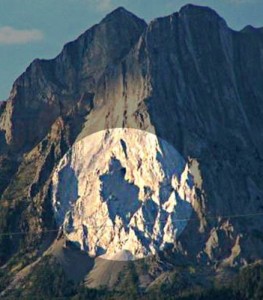 As fantastic, as this story seems there are small grains of truth. Following a trail of historical breadcrumbs and genealogical hints it was possible to find just enough fact in the fiction to understand how, combined with the enigmatic shadow, the disasters and a little imagination…this story might have come about.
As fantastic, as this story seems there are small grains of truth. Following a trail of historical breadcrumbs and genealogical hints it was possible to find just enough fact in the fiction to understand how, combined with the enigmatic shadow, the disasters and a little imagination…this story might have come about.
The Seeds of Truth
The Curse
In 1904, a large part of the city was destroyed by fire. In 1908 fire again claimed the city and with it the lives of several innocent citizens. Flood struck the city in 1916 and famine during the great depression. Relief came in 1964 when the Kootenai People and Chief Red Eagle lifted the curse in a ceremonial smoking of the peace pipe.
The History
The city of Fernie is named for its founder William Fernie, the nineteenth century prospector responsible for establishing the coal industry. However, Fernie’s contemporary Michael Phillips discovered the coal.
Phillips, a pioneer famous for forging a route through the Rocky Mountains (The Crows Nest Pass) was prospecting for gold when he came across the coal seams…about which he told Fernie.
The Genealogy
In 1886, Michael Phillips married Rowena David: daughter of Chief David and thus an Indian princess[1].
Legends and family lore are often deeply buried in historical fact. As time passes, these stories grow like a game of telephone: morphing into tall tales that are sometimes woven into the fabric of communities.
The moral of this story…
When digging through the roots of your family tree take some time to learn about the history of your ancestor’s communities. You may be pleasantly surprised by what you learn.
[1] http://www.archivescanada.ca/english/search/ItemDisplay.asp?sessionKey=1143825756048_206_191_57_199&l=-1&lvl=1&v=0&coll=1&itm=145090&rt=1&bill=1
[1] http://www.folklore.bc.ca/Locallegends.htm
Record Guides at RecordsBase.com
October 9, 2012 by ramona
Filed under Articles, Genealogy Research Resources, Latest News, Sharing Genealogy Information
 RecordsBase.com is a genealogy website designed to help family history hunters locate US documents to fill out the branches on their family tree. New to the site (in response to a review suggesting more resources would be helpful in this area) are record guides created to help genealogists locate the right records from their collection of over 2 billion public records.
RecordsBase.com is a genealogy website designed to help family history hunters locate US documents to fill out the branches on their family tree. New to the site (in response to a review suggesting more resources would be helpful in this area) are record guides created to help genealogists locate the right records from their collection of over 2 billion public records.
RecordsBase.com’s PR manager, Ashley Evans, says,
“Every state and county has its own way of storing public records and archival documents, by adding this content to our website, we help members navigate through that complex maze and find the records they need, no matter where and how they are stored. This is just one more way RecordsBase.com is listening to the customer and finding ways to meet their needs for a more pleasant user experience on our website.”
Included in the guides are:
- Steps on tracing archival documents
- Added content for the 100 largest counties in America
- Information provided by state
To use the guides simply click on the type of record you wish to search on the left sidebar. For instance clicking on Death Records will take you to a page that explains:
· Types of Death Records (certificates and indexes)
· Information Found in Records
· Locations for Death Records
· Restriction to Death Records Access
· Online Death Records Search
When you are ready to begin your research you will find that, the search forms are easy to use and allow you to search by individual state and county.
Like so many genealogy services, the site does require a fee based membership. Available in either a 1-Year Premium Membership that includes an unlimited number of searches including death, divorce, birth, military, marriage, census records, immigration lists, cemetery listings, obituaries & newspapers, surname history, and passenger lists.
A 3-Month Basic Membership that includes 3-months access to search millions of records, including death, divorce, birth, military, marriage, cemetery, and census records.
Before you begin searching, download your Family Tree Charts and Research Tracking Forms available with you 30-Day Free Trial to Genealogy beginner.
